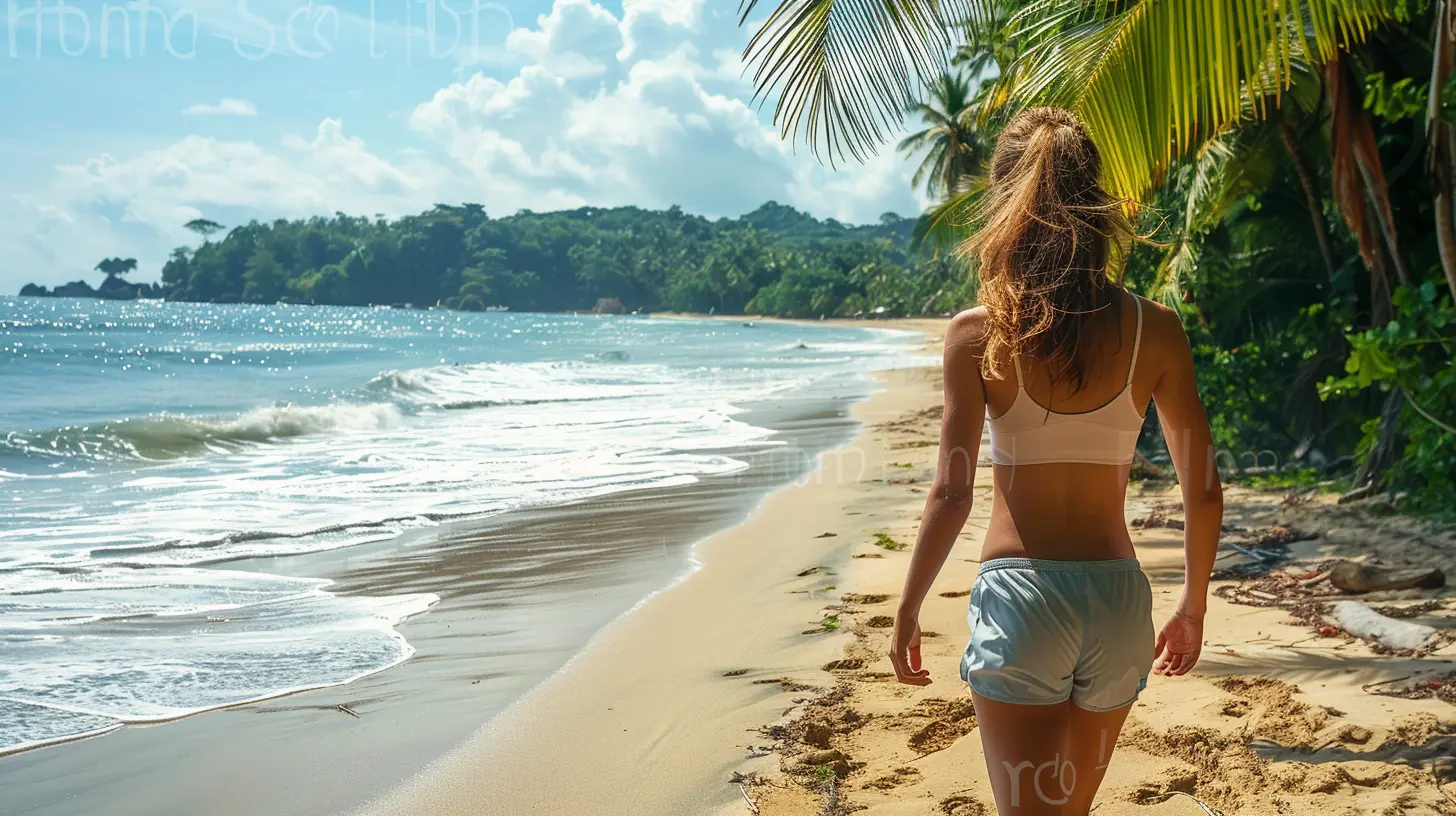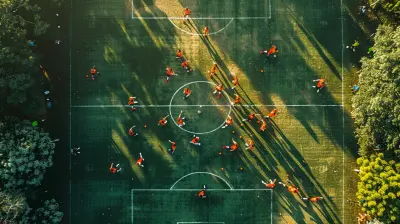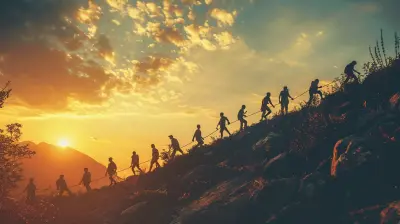Running in Different Terrains: Beach, Forest, and Urban Tips
10 May 2025
Running is like pizza—everyone has their favorite style. Some love the softness of sandy beaches, others enjoy the mystery of winding forest paths, and then there are the city runners who navigate the concrete jungle like urban gazelles. But here’s the thing: each terrain comes with its own unique challenges.
So, whether you're a seasoned marathoner or just trying to outrun your responsibilities for an hour, let's break down the tips and tricks for running on beaches, in forests, and through city streets. 
🏖 Running on the Beach: Like a Slow-Motion Action Movie (But Real)
Running on the beach seems glamorous in movies—slow-motion scenes with the sun setting behind you, waves crashing dramatically. In reality? It’s 90% struggle, 10% “Why do my calves feel like they’re on fire?”The Benefits of Beach Running
- Resistance Training: The sand works against you—it's like Mother Nature’s built-in ankle weights. You’ll build strength just by trying to keep moving.- Low-Impact Goodness: The softness of the sand reduces the impact on your joints, which is great if you're trying to avoid knee pain or shin splints.
- Scenic Motivation: Running with an ocean view? Beats staring at parked cars any day.
Beach Running Tips
✅ Run on Wet Sand – Dry sand is a leg-day nightmare. Stick to the firmer, wet sand near the water for a more stable surface.✅ Go Barefoot (If You Dare) – This helps strengthen your foot muscles, but be careful of hidden seashells and sneaky crabs plotting against your toes.
✅ Shorten Your Stride – Long strides on an unstable surface can mess up your form. Keep it short and controlled.
✅ Check the Tides – Running into a rising tide is only cool if you’re filming a survival documentary. 
🌲 Running in the Forest: Trail Running With a Side of Adventure
If beach running makes you feel like a Baywatch extra, trail running turns you into an off-brand Indiana Jones. It’s unpredictable, thrilling, and filled with tiny obstacles (a.k.a. tree roots waiting to sabotage you).The Perks of Forest Running
- Engages More Muscles – Uneven terrain forces your stabilizer muscles to work overtime. Translation? A full-body workout without the gym membership.- Fresh Air & Nature Therapy – Trees release oxygen, which makes running in the forest feel like breathing in pure energy.
- Mental Focus Boost – Dodging rocks and avoiding face-planting into a bush keeps you sharp.
Forest Running Tips
✅ Wear Trail Shoes – Regular running shoes won’t cut it. Trail shoes provide grip, preventing the classic “oops, I slipped on a mossy rock” moment.✅ Watch Your Footing – Roots, loose gravel, and sneaky tree stumps are out to get you. Keep your eyes on the path.
✅ Carry Water & Snacks – Getting lost in the woods sounds poetic until you realize you're dehydrated and hangry. Always pack some essentials.
✅ Respect Nature – Leave no trash, avoid disturbing wildlife, and remember—you’re running in their home. 
🏙 Urban Running: The Art of Dodging Crowds and Potholes
City running is a game of agility. You’re weaving through pedestrians, avoiding cyclists, and strategically timing your sprints between streetlights. It’s like playing real-life Frogger, but with better cardio.Why Urban Running is Awesome
- Convenient & Accessible – No need to drive to a trail or beach; just step outside and go.- Urban Scenery Keeps It Interesting – Every run can have a different route, whether you’re passing street art, local parks, or a particularly aggressive squirrel.
- Structured Surfaces – Pavement provides a steady and predictable surface, perfect for maintaining pace.
Urban Running Tips
✅ Run Early or Late – Fewer crowds, less traffic, and a significantly lower chance of accidentally photobombing a tourist’s picture.✅ Stay Visible – Wear bright colors or reflective gear. Drivers are not psychic—make sure they see you.
✅ Mind the Surface – Asphalt is smoother than concrete, which is better for your joints. If possible, run in parks or designated running trails.
✅ Use Traffic Lights to Your Advantage – Instead of seeing red lights as annoying interruptions, treat them as quick recovery breaks (or a chance to dramatically catch your breath like a movie hero). 
🏆 Which Terrain is Best? It Depends!
Honestly, it’s like picking between chocolate, vanilla, and strawberry—all have their charm. If you want a strength challenge, hit the beach. Craving adventure? Trails are your best friend. Love the convenience? The city’s calling.The key to becoming a well-rounded runner is mixing it up. Try all three terrains, challenge yourself, and most importantly—have fun. Because at the end of the day, running isn’t just about speed or distance. It’s about enjoying the journey (except when you hit mile 10 and start questioning your life choices).
Final Running Pro Tips (Regardless of Terrain)
✅ Warm Up & Cool Down – Don’t skip this unless you enjoy post-run regret.✅ Hydrate Like It’s Your Job – No one likes a dehydrated runner.
✅ Listen to Your Body – If something feels off, take a break. (Rest days are a legitimate training strategy.)
✅ Embrace the Fun – Running isn’t punishment; it’s an adventure.
Now, lace up your shoes, pick your terrain, and hit the ground running—literally!
all images in this post were generated using AI tools
Category:
RunningAuthor:

Frankie Bailey
Discussion
rate this article
6 comments
Kathleen Bishop
What a fantastic article! Exploring the diverse terrains of beach, forest, and urban landscapes adds so much richness to our running experiences. Your tips are practical and inspiring! I can’t wait to hit the trails and roads with new insight. Keep up the great work sharing these valuable insights with us!
May 17, 2025 at 10:53 AM

Frankie Bailey
Thank you so much for your kind words! I'm thrilled you found the tips helpful and inspiring. Happy running!
Landon McCarron
Great insights on running in diverse terrains! Embracing different environments can truly elevate our experience and fitness. Keep inspiring us!
May 17, 2025 at 3:46 AM

Frankie Bailey
Thank you for the kind words! Embracing diverse terrains really does enhance our running experience. Happy running!
Zeno Bellamy
Great tips! Enjoy exploring diverse terrains for a refreshing run!
May 16, 2025 at 8:14 PM

Frankie Bailey
Thank you! I'm glad you found the tips helpful. Happy running!
Celine Holland
From sandy strides to forest frolics and urban sprints, running in different terrains keeps the adventure alive! Just remember: flip-flops are for the beach, not the trail! 🏖️🌲🏙️
May 16, 2025 at 4:29 AM

Frankie Bailey
Absolutely! Embracing diverse terrains enhances the running experience, but proper footwear is key. Happy running! 🏃♂️🌍
Victor Vance
Great tips for every terrain!
May 15, 2025 at 8:33 PM

Frankie Bailey
Thank you! I'm glad you found the tips helpful for all types of terrains! Happy running!
Calyx Gill
Great insights! Each terrain offers unique challenges and rewards for runners. Happy running!
May 10, 2025 at 8:29 PM

Frankie Bailey
Thank you! I'm glad you found the insights useful. Happy running to you too!
MORE POSTS

The Rise of Underdog High School Teams: Stories of Determination

The Legacy of Jackie Robinson: How He Changed Baseball Forever

The Evolution of Passing in Modern Football: Case Studies from This Season

Wrestling and Martial Arts: How Grappling Influences Other Combat Sports

Balancing Tradition with Innovation: The Evolution of Coaching Philosophies